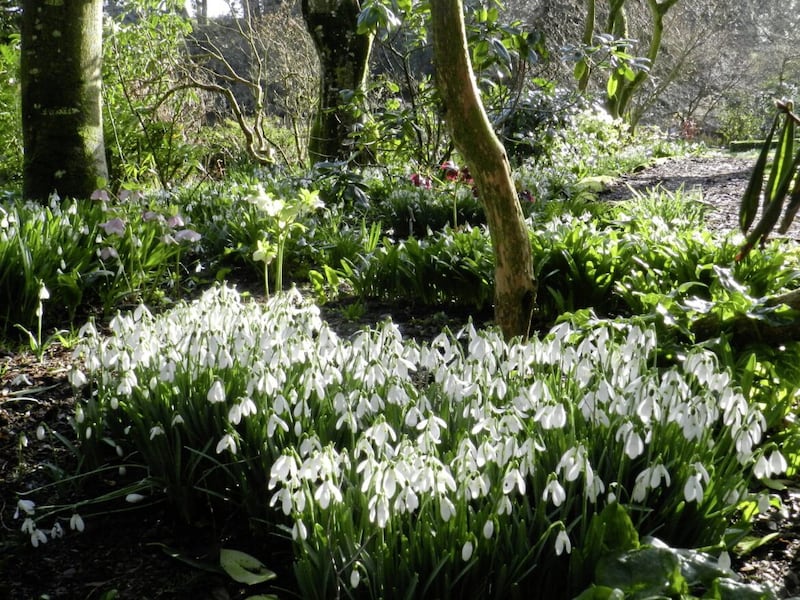
SNOWDROPS are enduring, both in their appeal and in their life cycle. When asked where’s the best place to see them, I suggest walking along a random rural single-track road, anywhere in Ireland, until you come across an old farmhouse that hasn’t been inhabited since the 1970s. It’ll be surrounded by mature sycamore and ash, and there’ll likely be a fuchsia, while on the ground at this time of year will be a carpet of Galanthus nivalis. Over the course of those decades the plants have been left unhindered, slowly spreading by seed and multiplying beneath the soil, forming large clumps of dainty white flowers that herald the arrival of spring – as it comes earlier each year.
The snowdrops in my own garden were sourced from one such farmhouse. More than 20 years ago, my late father-in-law called at our door one dark February evening with a black bin liner. Inside were dozens of snowdrops, lifted that afternoon from his wife’s former home in Co Monaghan. The couple had made a nostalgic return to the deserted homestead a matter of weeks before it was due to be flattened to make way for an opulent muck mansion. Neither were gardeners but perhaps they knew instinctively how Gilanthus are best planted ‘in the green’, just after flowering but before the foliage has disappeared. You can of course plant bulbs in the early autumn but lifting existing clumps in late winter, early spring and replanting within days is the surefire method. Splitting your existing clumps every few years will help them spread. The snowdrops will steadily multiply and if you’re around long enough, they just might create the desired 'carpet' effect characteristic of so many centuries-old parklands.
The Galanthus genus consists of around 20 species sharing similar characteristics. While they come in various sizes – some as tall as 30cm – they all originate as bulbs and have grassy, dark green leaves and a single pendant-like, white drooping flower made up of six petals – three on the outside and three cupped in the middle.

They originate on a swathe of Europe and Asia stretching from northern Spain to Iran. Snowdrops have become naturalised over recent centuries far beyond their original homelands and now grow extensively as far away as North America and even the more temperate parts of Australia. If there isn’t an old abandoned farmhouse near you, why not visit one of the venues listed here, where you’ll find this famed spring harbinger in full bloom over the coming weeks…
- The Argory in Moy, Co Tyrone arguably provides the best of the National Trust's snowdrop showcases. Overlooking the River Blackwater, this gentry house and 315-acre estate features oaks, horse chestnut, beech and impressive pollard lime trees - all the planting underlain with snowdrops.
- Altamont Gardens in Co Carlow is the place for some rare cultivars, including 'Emerald Isle', a form of Galanthus ikariae with very green foliage.
- Edinburgh Royal Botanic Gardens has a fantastic snowdrop collection and dedicated seasonal guided garden tours.
- Springhill, Rowallane, Castle Ward – National Trust properties are always there or thereabouts when it comes to celebrating the snowdrop. Springhill in east Tyrone’ is a 17th-century 'Plantation' home with walled gardens and parkland. Rowallane, where they’ve planted more than 100,000 snowdrop bulbs in recent years, and Castle Ward, both in Co Down, will never disappoint, whatever the season.






